Blog of Evelyne Para, SI UN Representative at UNESCO, Paris.
“Our current way of life is unsustainable, we are depleting the resources of the planet, and if we continue to live as today, we will need the resources of three Earths by 2050!
For many years, human behaviours and activities have been deteriorating terrestrial and marine ecosystems leading to climate change, unprecedented environmental degradation and the irreversible extinction of millions of species. Every day, we see the dramatic consequences of this situation throughout the world, particularly on exposed and vulnerable populations: scorching heats, droughts, fires, catastrophic floods… leading to food insecurity, poverty, water shortages, migrations … And we know that 80% of people displaced by disasters and climate change around the world are women and girls.
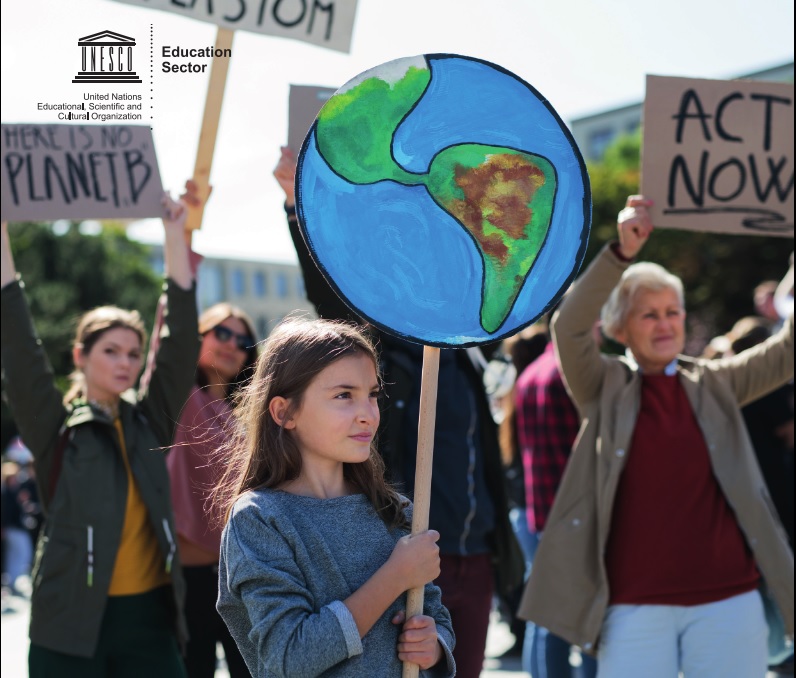
Image courtesy of UNESCO.
It’s urgent to find solutions, because we don’t have a “Planet B”. Let’s change course! We must no longer adopt denial of these anxiety-provoking events as a protective mechanism. On the contrary, we must privilege the understanding of these phenomena, the awareness and the responsibility of individual and collective actions, in order to learn how to modify our way of living, preserve our planet and create a more sustainable world.
But what does this education for sustainable development (ESD) contain, that aims to fight against unsustainable environmental, social and economic practices? How should we implement this learning to act for the planet? How can we ensure the integration of this learning in the education systems of different countries?

An ‘ESD for 2030’ toolbox
To help Member States, regional and global actors, to develop education for sustainable development (ESD), a toolbox is proposed by UNESCO. It provides an evolving set of resources to deploy activities in five priority action areas.
>>> 1/ Advancing national policies supporting ESD
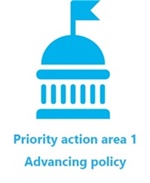
Courtesy of UNESCO
The first tools of the toolbox make it possible to consider ESD as a “prism” for analysing national education policies, learning outcomes and practices. This analysis is the first step.
Cultures shape our way of seeing and what we see, so they will also condition the way in which the analysis from the ‘ESD Prism’ will take place. Just as we always see different things in different places from different perspectives, so ESD will never be practiced in exactly the same way in all countries.
Many factors affect how ESD will be interpreted and the ability of countries to manage it. Dominant factors that condition social change – such as industrialisation, urbanisation, consumerism, lifestyle choices, resource availability and globalisation – will influence ESD-related priorities differently according to the different countries. Local cultures and histories, as well as indigenous knowledge and its relationship to global knowledge, will also impact ESD and how it’s interpreted and practiced. However, regardless of the country, the analytical tools of the ‘ESD Prism1 support the global goals of ‘ESD for 2030’. They encourage policymakers, who have a particular responsibility in bringing about the massive global transformation needed, as well as all practitioners within Member States (teachers, educators, representatives of civil society, associations and NGOs), in order to initiate the process of reorienting education and creating an enabling environment for the deployment of ESD in educational institutions, communities and other places of learning.
The first global results of this analysis by the “ESD Prism” have been reported in a UNESCO publication entitled ‘An analysis of country submissions under the United Nations Framework Convention on Climate Change’.
>>> 2/ Transforming learning environments
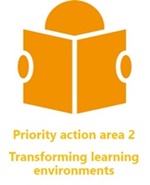
Courtesy of UNESCO
To encourage learners to become agents of change with the knowledge, means, will and courage to take transformative action for sustainable development, the educational institutions themselves need to be transformed, so that learners learn what that they live and experience what they learn.
Tools for educational institutions have been created to encourage them to develop a school culture of sustainability and involve the whole community school in climate actions.
Teaching Kits and guides have been created for teachers, to help them to explain to learners what it means to become global citizens and how they can contribute to sustainable development. Ideas for classroom activities for teachers have been offered by the UNESCO Associated Schools Network: ‘Schools in action, global citizens for sustainable development’ to help students develop knowledge, skills, values, attitudes and behaviors that promote ESD and also global citizenship education.
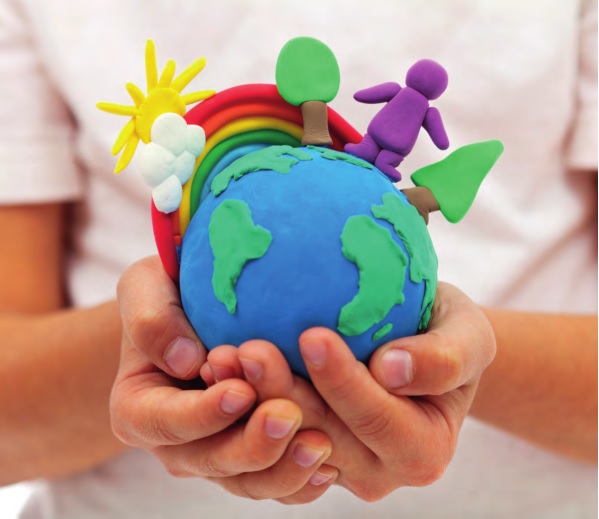
Courtesy of UNESCO
A guide for students has been published to help each student to become an actor themself, as part of their home, their school, their local community, their country and in the world.
>>> 3/ Building capacities of Educators
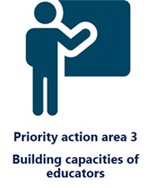
Courtesy of UNESCO
Educators remain key players in facilitating learners’ transition to sustainable lifestyles, at a time when information is available everywhere and their role is changing. Educators in any educational setting can help learners to understand the complex choices that sustainable development requires and to motivate them to transform themselves and the society. To guide and empower learners, educators themselves must be empowered and equipped with the knowledge, skills, values and behaviours necessary for this transition.
>>> 4/ Empowering and Mobilising Youth
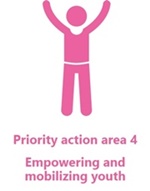
Courtesy of UNESCO
Young people of today and future generations will have to face the consequences of unsustainable development. Their present and their future are at stake! These young people are increasingly vocal, demanding urgent and decisive change, and holding world leaders accountable, also in order to address the climate crisis. In 2021, an estimated four million young people took to the streets around the world, showing an unprecedented level of leadership in the fight against the climate crisis. They have imagined, and they continue to dream up, the most creative and ingenious solutions to sustainability challenges. In addition, young people are an important consumer group and how their consumption patterns evolve will greatly influence their country’s sustainability trajectory. Therefore, empowering and mobilising young people of all genders is central to the implementation of ESD.
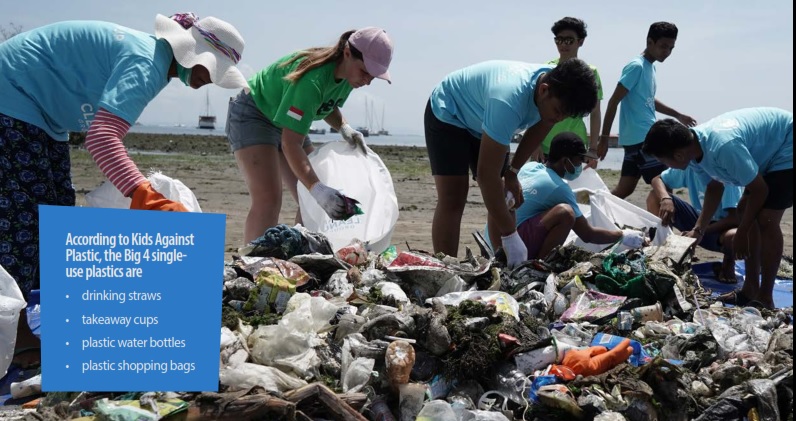
Courtesy of UNESCO
For example, thousands of young people around the world have joined UNESCO in hunting down waste at home, at school and in their community, by massively joining the ‘Trash Hack’ campaign launched by UNESCO that encourages young people to learn about sustainability by tackling waste.
>>> 5/ Accelerating local level actions
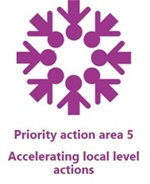
Courtesy of UNESCO
It’s in their daily lives, at the local level, that learners and people make their choices about sustainable development and put them into practice. It is also within local communities that people find partners for their sustainability efforts. This is why it’s important to promote active cooperation between educational institutions and local communities to ensure that the latest and most innovative knowledge and practices in sustainable development are used to advance ESD. UNESCO Global Network of Learning Cities has published a guide of examples of expressing the global Sustainable Development Goals (SDGs) into local actions by outlining concrete actions that members of the UNESCO Global Network of Learning Cities have taken to promote green and healthy environments, equity and inclusion, decent work and entrepreneurship.
Such examples of action are increasingly followed by many NGOs involved, such as Soroptimist International, in education programs!
To discover more about ESD, read ‘Education for sustainable development: a roadmap’.”

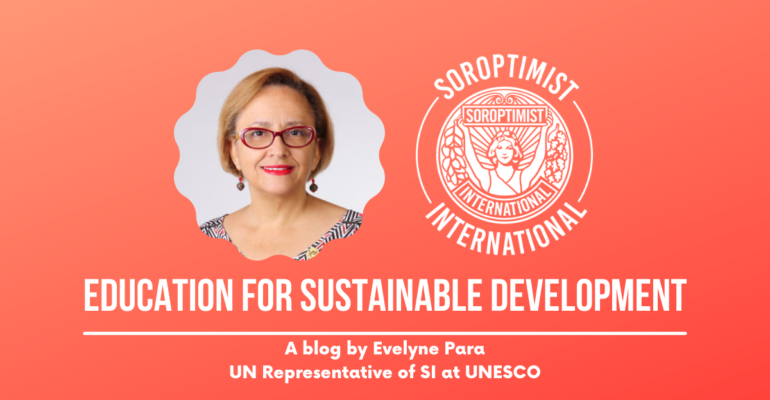
This is very informative article. I enjoyrd reading it.